
|
Astronomy Picture Of the Day (APOD)
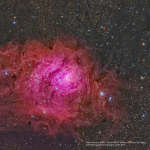 Pan STARRS Across the Lagoon
Pan STARRS Across the Lagoon
25.04.2019
Ridges of glowing interstellar gas and dark dust clouds inhabit the turbulent, cosmic depths of the Lagoon Nebula. Also known as M8, the bright star forming region is about 5,000 light-years distant.
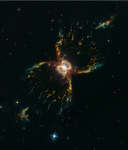 The Shape of the Southern Crab
The Shape of the Southern Crab
24.04.2019
The symmetric, multi-legged appearance of the Southern Crab Nebula is certainly distinctive. About 7,000 light-years distant toward the southern sky constellation Centaurus, its glowing nested hourglass shapes are produced by the remarkable symbiotic binary star system at its center.
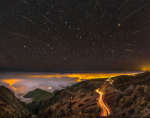 Meteors, Comet, and Big Dipper over La Palma
Meteors, Comet, and Big Dipper over La Palma
23.04.2019
Meteor showers are caused by streams of solid particles, dust size and larger, moving as a group through space. In most cases, the orbits of these meteor streams can be identified with dust expelled from a comet.
 Mars Methane Mystery Deepens
Mars Methane Mystery Deepens
22.04.2019
The methane mystery on Mars just got stranger. New results from ESA and Roscosmos' ExoMars Trace Gas Orbiter, has unexpectedly not detected methane in the atmosphere of Mars. This result follows the 2013 detection of methane by NASA's Curiosity rover, a result seemingly confirmed by ESA's orbiting Mars Express the next day.
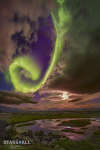 Spiral Aurora over Icelandic Divide
Spiral Aurora over Icelandic Divide
21.04.2019
Admire the beauty but fear the beast. The beauty is the aurora overhead, here taking the form of great green spiral, seen between picturesque clouds with the bright Moon to the side and stars in the background. The beast is the wave of charged particles that creates the aurora but might, one day, impair civilization.
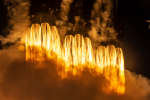 Falcon Heavy Launch Close up
Falcon Heavy Launch Close up
20.04.2019
Twenty seven Merlin rocket engines are firing in this close-up of the launch of a Falcon Heavy rocket. Derived from three Falcon 9 first stage rockets with nine Merlin rocket engines each, the Falcon Heavy left NASA's Kennedy Space Center launch pad 39A on April 11.
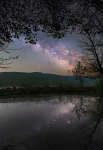 Milky Way in Northern Spring
Milky Way in Northern Spring
19.04.2019
A postcard from planet Earth, this springtime night skyscape looks over Alandan lake in the Alborz mountains. Taken after local midnight on April 17, the central Milky Way is rising over the region's southeast horizon. Its luminous track of stars and nebulae along the plane of our galaxy are reflected in the mirror-like lake.
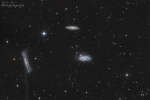 The Leo Trio
The Leo Trio
18.04.2019
This group is popular in the northern spring. Famous as the Leo Triplet, the three magnificent galaxies gather in one field of view. Crowd pleasers when imaged with even modest telescopes, they can be introduced individually as NGC 3628 (left), M66 (bottom right), and M65 (top).
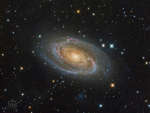 Messier 81
Messier 81
17.04.2019
One of the brightest galaxies in planet Earth's sky is similar in size to our Milky Way Galaxy: big, beautiful Messier 81. Also known as NGC 3031 or Bode's galaxy for its 18th century discoverer, this grand spiral can be found toward the northern constellation of Ursa Major, the Great Bear.
 In the Vicinity of the Cone Nebula
In the Vicinity of the Cone Nebula
16.04.2019
Strange shapes and textures can be found in neighborhood of the Cone Nebula. The unusual shapes originate from fine interstellar dust reacting in complex ways with the energetic light and hot gas being expelled by the young stars.
|
January February March April May June July August September October November December |
|||||||||||||||||||||||||||||||||||||||||||||||||